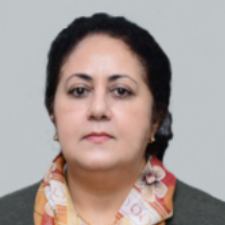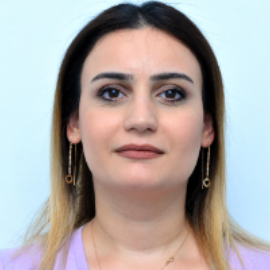International Journal of Intelligent Systems and Applications (IJISA)
IJISA Vol. 16, No. 2, 8 Apr. 2024
Cover page and Table of Contents: PDF (size: 532KB)
A New Approach to Improving Search Efficiency in Digital Libraries
PDF (532KB), PP.13-23
Views: 0 Downloads: 0
Author(s)
Index Terms
Digital Library, Wiki Technologies, Intelligent Systems, Clustering, Smart Library
Abstract
The development of Internet technologies influences the activities of libraries and changes their nature. The volume of content collected in digital libraries is growing rapidly. This requires the use of new technologies to search and obtain electronic materials (text, video, images, sound files) stored in the e-library. Today, using the new capabilities of network technologies and intelligent systems, the proper organization of the digital library, and increasing the efficiency of library services are the main factors leading to an increase in the number of readers and their satisfaction. The main objectives of digital libraries are to ensure efficient retrieval of electronic resources and collaboration between users. While researching various scientific articles on library and information sciences (LIS), we did not encounter approaches using cluster analysis in combination with wiki technologies. To collaborate users in digital libraries and their involvement in organizing electronic resources, we propose using an open database managed by wiki technologies. To effectively search for electronic resources in these open databases, it is proposed to use the clear clustering method. The clear clustering method also allows you to control the quality of clustering. The proposed method is important when creating intelligent (smart) libraries that are easy to manage and automate certain tasks. The research aims to create not just a smart library, but a smart library based on wiki technologies.
Cite This Paper
Irada Alakbarova, Dilbar Alizada, "A New Approach to Improving Search Efficiency in Digital Libraries", International Journal of Intelligent Systems and Applications(IJISA), Vol.16, No.2, pp.13-23, 2024. DOI:10.5815/ijisa.2024.02.02
Reference
[1]Ignatius M. Ezeani, “Digital library deployment in a university: Challenges and prospects”, Library Hi Tech., Vol.29, No.2, pp.373-386, 2011. DOI:10.1108/07378831111138233
[2]Gary Cleveland, “Digital Libraries: definitions, issues and challenges”, International Federation of Library Associations and Institutions: UDT Core Programme, pp.1-10, 1998.
[3]Fakhar M. Manesh, Massimiliano M. Pellegrini, Giacomo Marzi, Marina Dabic, “Knowledge Management in the Fourth Industrial Revolution: Mapping the Literature and Scoping Future Avenues”, IEEE Transactions on Engineering Management, No.68, pp.1-22, 2021. DOI:10.1109/TEM.2019.2963489
[4]Li Jiahui, Wang NingXing, Duan Chao, “The Design of Smart Library Based on 5G”, Journal of Physics Conference Series (JPCS). Vol.1606, pp.1–7, 2020. DOI:10.1088/1742-6596/1606/1/012011
[5]Yingshen Huang, Andrew M. Cox, John Cox, “Artificial Intelligence in academic library strategy in the United Kingdom and the Mainland of China”, The Journal of Academic Librarianship, Vol.49, No.6, pp.1-10, 2023. DOI:10.1016/j.acalib.2023.102772
[6]Asefeh Asemi, Adeleh Asem, “Artificial Intelligence (AI) application in Library Systems in Iran: A taxonomy study”, Library Philosophy and Practice. Vol.2, No.1, pp.1–11, 2018. https://core.ac.uk/reader/189479400
[7]Li Xuemin, Ji Mingxin, Li Hongwei, Li Junyang, “Research on the development path of university smart library based on the Internet of things”, Applied Mathematics and Nonlinear Sciences. Vol.7, No.2, pp.1075-1084, 2022. DOI:10.2478/amns.2021.2.00310
[8]Daphne P. Koller, Y. Shoham, Michael P. Wellman, Edmund H. Durfee, W.P. Birmingham, J. Carbonell, “The role of AI in digital libraries”, IEEE Expert. Vol.11, No.3, pp.8-13, 1996. DOI:10.1109/64.506746.
[9]Mohammad F. Manesh, Massimiliano M. Pellegrini, Giacomo Marzi, Marina Dabic, “Knowledge Management in the Fourth Industrial Revolution: Mapping the Literature and Scoping Future Avenues”, IEEE Transactions on Engineering Management, Vol.68, No.1, pp.289-300, 2021. DOI:10.1109/TEM.2019.2963489
[10]Andrea J. Hester, Judy E. Scott, “A conceptual model of wiki technology diffusion” Proceedings of the 41st Hawaii International Conference on System Sciences (HICSS-41 2008), Waikoloa, Big Island, HI, USA, pp.32-32, 7-10 January 2008, DOI:10.1109/HICSS.2008.10
[11]Đorđe Stakić, “Wiki technology – origin, development and importance”, Journal of Informatics and Librarianship, Vol.10, No.1-2, pp.61-69, 2009.
[12]Christian Wagner, Karen S.K. Cheung, Rachael Ip, Stefan Böttcher, “Building Semantic Webs for e-government with Wiki technology”, Journal of Electronic Government, Vol.3, No.1, pp.36-55, 2006. DOI:10.1504/EG.2006.008491
[13]Ulrike Cress, Joachim Kimmerle, “A systemic and cognitive view on collaborative knowledge building with wikis”, International Journal of Computer-Supported Collaborative Learning (IJCSCL), Vol.3, No.2, pp.105-122, 2008. DOI:10.1007/s11412-007-9035-z
[14]Margaret M. Luo, Sophea Chea, “Wiki use for knowledge integration and learning: A three tier conceptualization”, Computers & Education, Vol.154, pp.1-16, 2020, DOI:10.1016/j.compedu.2020.103920
[15]Fernando N.V. Vlist, Anne Helmond, Marcus Burkhardt, Tatjana Seitz, “API Governance: The Case of Facebook’s Evolution”, Social Media + Societ, Vol.8, No.2, pp.1-24, 2022. DOI:10.1177/20563051221086
[16]Heather Ford, Shilad Sen, David R. Musicant, Nathaniel Miller, “Getting to the source: where does Wikipedia get its information from?”, Proceedings of the 9th International Symposium on Open Collaboration, No.9, pp.1-10, 2013. DOI:10.1145/2491055.2491064
[17]Laura Saunders, “Academic libraries’ strategic plans: Top trends and under-recognized areas”, Journal of Academic Librarianship, Vol.41, No.3, pp.285-291, 2015. DOI:10.1016/j.acalib.2015.03.011
[18]Sandy Hervieux, Amanda Wheatley, “Perceptions of artificial intelligence: A survey of academic librarians in Canada and the United States”, Journal of Academic Librarianship, Vol.47, No.1, pp. 1-11, 2021. DOI:10.1016/j.acalib.2020.102270
[19]Jeremy Frumkin, “The Wiki and the digital library”, OCLC Systems & Services, Vol.21, No.1, pp.18-22, 2005. DOI:10.1108/10650750510578109
[20]Rajesh K. Das, Mohammad Sh.U. Islam, “Application of Artificial Intelligence and Machine Learning in Libraries: A Systematic Review”, Library Philosophy and Practice, 6762, pp.1-18, 2021. DOI:10.48550/arXiv.2112.04573
[21]Beena AL., Humayoon S. Kabir, “Machine Learning and Security Applications in Digital Library”, International Journal of Innovative Technology and Exploring Engineering (IJITEE), Vol.9, No.1, pp.2165-2168, 2019. DOI:10.35940/ijitee.AL4718.119119
[22]Dhruba J. Borgohain, Sohaimi Zakaria, Manoj K. Verma, “Cluster Analysis and Network Visualization of Global Research on Digital Libraries during 2016–2020: A Bibliometric Mapping”, Science & Technology Libraries, Vol.41, No.3, pp.266-287, 2021. DOI:10.1080/0194262X.2021.1993422
[23]Brady D. Lund, Jinxuan. Ma, “A review of cluster analysis techniques and their uses in library and information science research: k-means and k-medoids clustering”, Performance Measurement and Metrics, Vol.22, No.3, pp.161-173, 2021. DOI:10.1108/PMM-05-2021-0026
[24]Yasir Riady, Muhammad Sofwan, Mailizar Mailizar, Turki M. Alqahtani, Lalu N. Yaqin, Akhmad. Habibi, “How can we assess the success of information technologies in digital libraries? Empirical evidence from Indonesia”, International Journal of Information Management Data Insights, Vol.3, No.2, pp.1-10, 2023. DOI: 10.1016/j.jjimei.2023.100192
[25]Mattew Bejune, “Wikis in Libraries”, Information Technology and Libraries (ITL), Vol.26, No.3, pp.26-38, 2007, DOI:10.6017/ital.v26i3.3273
[26]Ruslan A. Baryshev, Olga I. Babina, Pavel A.. Zakharov, Vera P. Kazantseva, Nikita O. Pikov, “Electronic Library: Genesis, Trends: From electronic library to samrt library”, Journal of Siberian Federal University (Humanities & Social Sciences), Vol.6, No.8, pp.1043-1051, 2015. DOI:10.17516/1997-1370-2015-8-6-1043-1051
[27]Nahak Brundaban, Padhi Satyajit, “The Role of Smart Library and Smart Librarian for E- Library Services”, Proceedings of the 12th International CALIBER-2019, Bhubaneswar, Odisha, pp.89-97. 28-30, November, 2019, https://ir.inflibnet.ac.in/handle/1944/2338
[28]Joachim Schöpfel, “Smart Libraries”, Infrastructures, Vol.3, No.4:43, pp.1–11, 2018. DOI:10.3390/infrastructures3040043
[29]Linda Cloete, "Metadata and its Applications in the Digital Library: Approaches and Practices", Library Hi Tech, Vol.27, No.2, pp.313-314. DOI:10.1108/07378830910968281
[30]Friedrich Summann, Norbert Lossau, “Search Engine Technology and Digital Libraries”, D-Lib Magazine, Vol.10, No.9, 2004. DOI:10.1045/september2004-lossau
[31]Michael Z. Zgurovsky, Yuriy P. Zaychenko, “The Cluster Analysis in Big Data Mining”, Big Data: Conceptual Analysis and Applications, Vol.58, pp.1-42, 2020, DOI:10.1007/978-3-030-14298-8_1
[32]Irada Alakbarova, "Determining the interests of Social Network Users", International Journal of Education and Management Engineering, Vol.13, No.4, pp. 1-8, 2023.
[33]Swagatam Das, Amit Konar, “Automatic image pixel clustering with an improved differential evolution”, Applied Soft Computing, Vol.9, No.1, pp.226-236, 2009, DOI:10.1016/j.asoc.2007.12.008
[34]Jiarui Li, Yukio Horiguchi, Tetsuo Sawaragi, “Cluster Size-Constrained Fuzzy C-Means with Density Center Searching”, International Journal of Fuzzy Logic and Intelligent Systems (IJFLIS), Vol.20, No.4, pp.346-357, 2020. DOI: 10.5391/IJFIS.2020.20.4.346
[35]Svetlana Simić, Zorana Banković, Jose R. Villar, Dragan Simić, Svetislav D. Simić, “A hybrid fuzzy clustering approach for diagnosing primary headache disorder”, Logic Journal of the IGPL, Vol.29, No.2, pp.220-235, 2021. DOI:10.1093/jigpal/jzaa048
[36]Sara I.R. Rodríguez, Francisco A.T. Carvalho, “Fuzzy clustering algorithms with distance metric learning and entropy regularization”, Applied Soft Computing, Vol.113, Part A, pp.1-22, 2021. DOI:10.1016/j.asoc.2021.107922
[37]Adil M. Bagirov, Ramiz M. Aliguliyev, Nargiz Sultanova, “Finding compact and well-separated clusters: Clustering using silhouette coefficients”, Pattern Recognition, Vol.135, pp.1-15, 2023, DOI:10.1016/j.patcog.2022.109144
[38]Ramiz M. Aliguliyev, “Performance evaluation of density-based clustering methods”, Information Sciences, Vol.179, No.20, pp.3583-3602, 2009. https://doi.org/10.1016/j.ins.2009.06.012
[39]Hanane Ezzikouri, Youness Madani, Mohammed Erritali, Mohamed Oukessou, “A New Approach for Calculating Semantic Similarity between Words Using WordNet and Set Theory”, Procedia Computer Science, Vol.151, pp.1261-1265, 2019. DOI:10.1016/j.procs.2019.04.182

